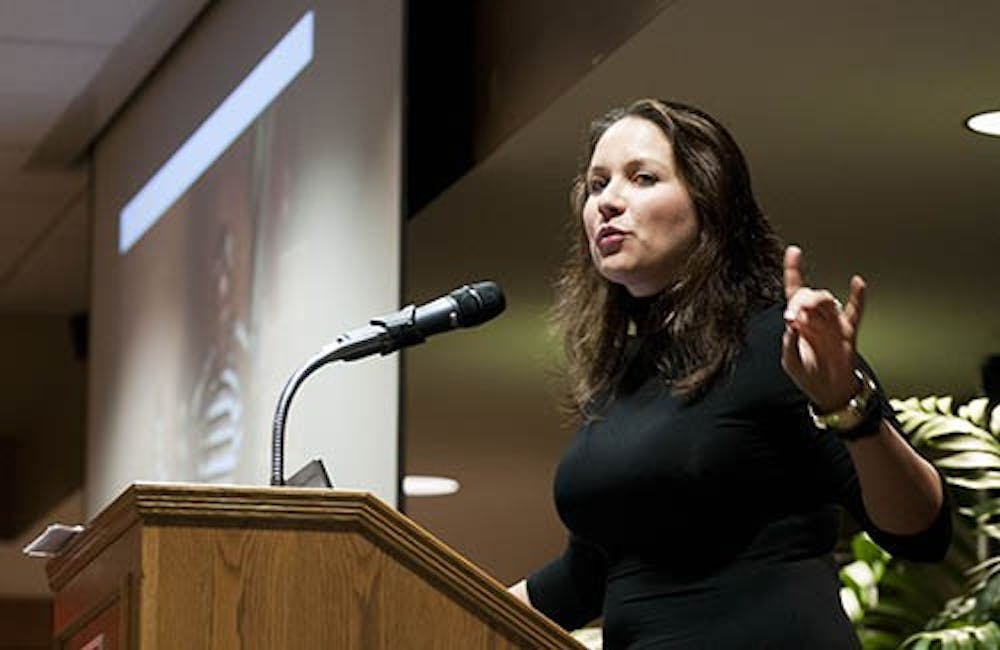Rukmini Callimachi has been called a combat journalist, a title she said she doesn’t agree with. However, she has seen one war, countless coups and multiple massacre sites during her time in French West Africa. Callimachi didn’t come to Ball State to talk about the deaths of men, but the lives of young girls: the hunger brides of Niger.
The Associated Press West Africa correspondent met with students in Cardinal Hall at the L.A. Pittenger Center to discuss the writing and research of her piece, “The Hunger Brides of Niger.”
Callimachi began by outlining a problem for writers attempting to capture the pain of the problems contemporary Africa faces. The first slide of her PowerPoint presentation read “Another Famine – How to make readers care.” Twelve of the twenty least-developed countries in the world fall within her area of reporting.
After receiving a tip of an impending food shortage in Africa, Callimachi wanted to dig deeper than the typical stories and photos of crying mothers and malnourished babies, cynically monikered “famine porn,” by some in the industry due to its repetitive and fantastic nature.
“I wanted to get beyond the walls of the feeding center,” she said.
In the country of Niger, and more specifically the region of Maradi, young girls are married off to suitors in exchange for a cash dowry. This leaves their parents with one less mouth to feed and additional resources to care for the rest of the family.
In Maradi, 41 percent of girls are married before their fifteenth birthday. By the time they are eighteen, 85 percent are wed.
Callimachi eventually found a young girl who she determined to be between the ages of thirteen and sixteen, who had been married off to a much older man three months before having her first menstrual cycle.
The story is framed around the girl’s village of Hawkantaki, where nine of the ten young girls were married or engaged.
One girl named Zali Idy was married to a 23 year-old man when she was only twelve.
The girls suffered significant sexual abuse. She said the stories of these girls’ wedding nights were the stories of their rapes.
During the question portion of the presentation, there was an audible gasp when Callimachi specified that these girls’ husbands were also their first cousins. Many audience members teared up.
“My goal is not so lofty as a cause,” Callimachi said when asked what she wanted readers to take away from her story. “I want them to be transported to this place.”
The laughing and giggling that usually accompanies the end of a lecture was noticeably less so. Some attendees took a moment to compose themselves, while others rushed the podium to get one of Callimachi’s limited business cards.
Many students said they attended as part of a class requirement but walked out with much more than points or a grade.
“It was a sad story to hear,” sophomore advertising major Spencer Abbot said. “I couldn’t imagine. As a fourteen year old, marriage was the last thing on my mind.”
“It made me sick to my stomach,” freshman advertising major Rachel Giese said.


